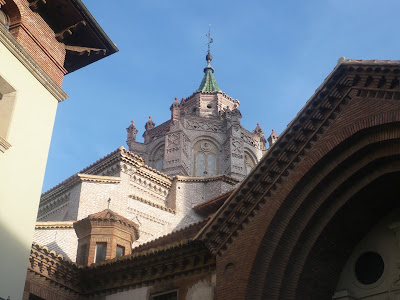Exploring Moorish and Mudéjar influences in Aragon and Teruel
In the year 711, a loose confederacy of Berber, Black African and Arab tribes invaded and conquered most of what is now Spain. In English, we call these people Moors though that's not a term they used for themselves. They called their conquered territoryAl-Andalus and they remained on the Iberian peninsula for nearly 800 years. The Islamic impact of the Moors was profound and it can still be felt and seen in modern Spain today. Here are some details of the Aljafería Palace in Zaragoza. This is true Moorish architecture.
Starting in the 1200s, a coalition of Christian kings started to drive the Moors from Spain in a three century long campaign called the Reconquista. As Moorish territory fell to the Christian kings of Spain, the Moors who stayed behind were allowed to continue to practice their religion. At least until the 15th century that is.
The Spanish called the Moors who remained in these newly conquered territories Mudéjar. The word itself is a Medieval Spanish reworking of an Arabic term for "the ones who stayed." Mudéjar is also the name of the architectural style from this period. Mudéjar is a hybrid of Moorish, Gothic and Romanesque styles.
It is this Mudéjar architecture that most non-Spaniards think of when they think of Moorish architecture. Mudéjar reached its highest degree of sophistication in the Spanish provinces of Aragon and Teruel. Thanks to the generosity of The Spanish Tile Manufacturer's Association (ASCER) and Tile of Spain , I had the chance to be in both of those places last week and to see for myself what Mudéjar looks like in person.
Here's a collection of architectural details and all of it is in the Mudéjar style. I took these photos in Zaragoza and Teruel and they're not in any particular order.
So the next time someone starts talking about Moorish or Moorish Revival architecture, ask that person to clarify whether he's talking about true Moorish or Mudéjar. It will make you sound smart.
















